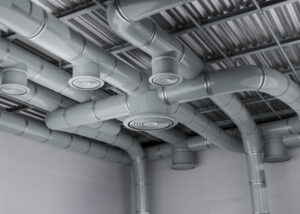Every season affects your dryer differently, which is why regular clothes dryer vent cleaning ensures consistent performance and safety throughout the year. When you maintain your vent seasonally, your dryer performs better, dries clothes faster, and avoids dangerous lint buildup that sparks fires. Most homeowners overlook this small task, but routine dryer vent cleaning protects your appliance and lowers your energy bill significantly. Spring pollen, summer dust, autumn leaves, and winter lint all contribute to vent blockages, making seasonal cleaning more important than ever.
Why Seasonal Clothes Dryer Vent Cleaning Really Matters
Your dryer pulls air through the vent, and if blocked, the appliance overheats, struggles to dry, and risks catching fire. Every time you dry laundry, lint escapes the trap and collects in the duct, requiring routine clothes dryer vent cleaning for removal. Without seasonal care, lint hardens, airflow weakens, and your system burns more energy while still leaving your clothes half damp. Blocked vents strain the heating element, reduce dryer life, and pose threats—all preventable with regular maintenance routines.
Spring – Clear Out Moisture and Winter Lint
After winter’s heavy use, spring is ideal for performing a full dryer vent cleaning to remove months of lint buildup. Your dryer worked overtime during colder months, so spring cleaning prevents it from overheating or underperforming during warmer days ahead. Unplug the dryer, disconnect the vent hose, and vacuum both ends to clear compacted winter debris clogging the entire ventilation system. While you’re at it, check your lint trap housing and vent exit for winter mold or moisture buildup that needs addressing immediately.
Summer – Beat the Heat With a Clean Dryer Vent
High humidity means more moisture inside your dryer, making summer clothes dryer vent cleaning essential for keeping things efficient and safe. Lint combines with summer humidity to form dense blockages inside ducts, reducing airflow and forcing longer drying cycles with each load. Regularly inspect the outdoor vent flap to ensure nothing obstructs airflow—wasps, leaves, or grass can sneak in during summer months. Consider placing a screen over the exit, but make sure airflow stays unrestricted to support proper cleaning results.
Autumn – Prepare for Peak Laundry Season
Fall is perfect for clothes dryer vent cleaning because the upcoming winter brings heavier laundry loads like blankets, jackets, and woolens. Cleaning the vent before peak season ensures your dryer performs efficiently during holidays when you’re constantly running it for bulky loads. Leaves and outside debris easily blow into outdoor vents in autumn, so clearing blockages prevents buildup before heavier use begins. Also, check the transition duct for any small tears or gaps that may allow lint to escape into the home instead.
Winter – Prevent Fire Hazards During Heavy Use
During winter, laundry loads increase, especially with comforters, towels, and multiple clothing layers—making regular dryer vent maintenance vital for safety. The dryer works overtime, and without a clean vent, lint buildup inside becomes a serious hazard due to reduced airflow and heat. Frozen or snow-covered outdoor vents can trap moisture and restrict exit paths, leading to damp clothes and damaged internal dryer components. Ensure the vent cap is clear from snow and inspect it regularly to keep winter air circulation functioning as safely as possible.
Tools You Need for Clothes Dryer Vent Cleaning
A vacuum attachment hose, vent cleaning brush, screwdriver, and flashlight make DIY dryer vent cleaning easy and affordable year-round. Start by unplugging the dryer, removing the back duct, and using your brush to dislodge lint clumps lodged deep inside the tube. Use your vacuum to suck up loose lint, and inspect both internal and external vents to ensure everything remains completely clear. If your duct is long or hidden in walls, consider hiring professionals for a seasonal cleaning to ensure safety. Dryer vent cleaners often inspect vents for damage or blockages that could cause costly repairs if left unattended.
Pro Tips for Easy Year-Round Maintenance
Clean your lint trap after every load to prevent build-up and reduce the load on your dryer vent maintenance schedule. Use metal vent hoses instead of plastic—they resist crushing and reduce fire risks during overheating, especially in winter and summer seasons. Mark your calendar for quarterly cleanings or align it with seasonal tasks like spring cleaning or changing HVAC air filters. If clothes take longer to dry or feel hot, these are warning signs telling you that dryer vent cleaning is overdue.
Benefits of Seasonal Dryer Vent Maintenance
Seasonal dryer vent cleaning saves energy, shortens drying time, protects the dryer, and most importantly, reduces fire risks dramatically. Clean vents prevent overworked motors, lower electric bills, and keep dryers from failing prematurely due to clogged airflow and restricted circulation. Your laundry smells fresher, the dryer runs quieter, and every load finishes quicker when airflow is clear from end to end. Routine cleaning also keeps allergens, mold, and mildew from spreading through humid ducts during warm months and into your home’s air supply.
Final Thoughts
Don’t treat dryer vent cleaning like a once-a-year chore—it’s a seasonal necessity that protects your home, wallet, and family. Stay ahead of clogs by making it a part of your spring, summer, autumn, and winter cleaning checklist without skipping a beat. You’ll enjoy faster drying, better indoor air quality, and peace of mind with a simple seasonal clothes dryer vent cleaning routine today. Protect your investment and your safety—prioritize clean dryer vents every season and experience safer, smarter drying all year long.
Season changing? So should your dryer vent. Get a quote today for expert clothes dryer vent cleaning tailored to your home’s needs.





